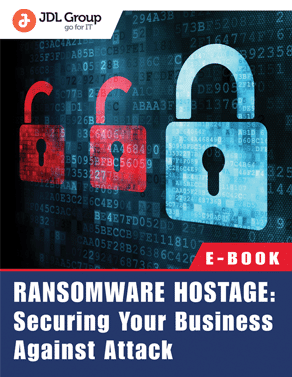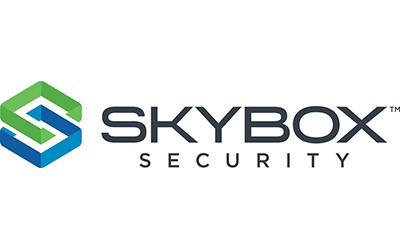THE ISSUE
Why remote workers are a security risk to your business?
Insecure Wi-Fi networks – Home Wi-Fi networks are an easier target for hackers because home networks are less likely to use firewalls and more likely to rely on cheap consumer-grade Internet modems and routers which may have weaker security and insufficient product support.
Remote desktop software can be vulnerable – Remote access software is a double-edged sword. If anything goes wrong and a hacker gets access to it, she/he will have full access to the company. The FBI recently issued an alert about a substantial rise in remote desktop protocol (RDP) attacks. They warned that criminals have developed new techniques to hack RDP sessions and are even selling access to these networks on the Dark Web.
Infected personal devices – Home devices are all more likely to become infected with spyware and other malware that could steal business account passwords. Another risk is the home printer. These can be easily hacked over WiFi. The hacker could potentially steal any information that was sent to the printer and use it to attack other parts of the network.
Public hotspots are a major risk – Remote employees may be tempted to work from a public hotspot like the local coffee shop. However, this can put them at risk of fake Wi-Fi networks known as “evil twins”.
Email scams may be harder to stop – Employees who work from home could also be more susceptible to “spoofing” attacks like the business email compromise (BEC) scam. A BEC is when a hacker impersonates a company employee, contractor, or vendor in order to trick another employee into sending them a payment, usually by wire transfer. If workers aren’t in the office, they are less likely to be suspicious of such requests.
IoT Security Issues
Lack of Compliance on the Part of IoT Manufacturers – Currently, there is no universal IoT security standards. Hence, manufacturers continue creating devices with limited security.
Lack of User Knowledge & Awareness – Social engineering attacks – Instead of targeting devices, a hacker targets a human, using the IoT i.e. Stuxnet attack.
IoT Security Problems in Device Update Management – Some IoT devices continue being used without necessary security updates.
Lack Of Physical Hardening – IoT devices could be physically tampered with, for example using a USB flash drive with Malware.
Botnet Attacks – Due to the lack of regular software security updates groups of IoT devices are turned into infected zombies and used as weapons to send incredibly vast amounts of traffic.
Industrial Espionage & Eavesdropping – Spying and intruding through IoT devices is a real problem, sensitive data may be compromised and used against its owner.
Highjacking Your IoT Devices – Ransomware has been named as one of the nastiest malware types ever existed. It does not destroy your sensitive files; it blocks access to them by way of encryption. If an IoT device gets infected, an attacker can infect all other devices connected to the same network. Then, the hacker who infected the devices will demand a ransom fee for the decryption key unlocking the files.
Data Integrity Risks of IoT Security In Healthcare – Most IoT devices extract and collect information from the external environment. It can be a smart thermostat, HVAC, TVs, medical devices. But sometimes these devices send the collected data to the cloud without any encryption.
Rogue IoT Devices – Rogue devices or counterfeit malicious IoT devices are beginning to be installed in secured networks without authorization. Example of rouge IoT devices can take the form of the Raspberry Pi, or WiFi Pineapple. These can be turned into a rogue AP (Access Point), thermostat, video camera, unbeknownst to users.
Crypto mining with IoT Bots – This type of attack involves infected botnets aimed at IoT devices, with the goal not to create damage, but mine cryptocurrency.
Additional Cybersecurity Resources
THE COMPUTER SOLUTION
End-Point Security Features
PREVENT
Before it Runs on Device
- Deep Learning malware detection
- Anti-Malware File Scanning
- Live Protection
- Pre-execution Behavior Analysis (HIPS)
- Potentially Unwanted Application (PUA) Blocking
Attack Surface Reduction
- Web Security
- Download Reputation
- Web Control / Category-based URL Blocking
- Peripheral Control (e.g. USB)
- Application Control
DETECT
Stop Running Threat
- Data Loss Prevention
- Runtime Behavior Analysis (HIPS)
- Malicious Traffic Detection (MTD)
- Antimalware Scan
- Active Adversary Mitigations
- Ransomware File Protection
- Disk and Boot Record Protection
- Man-in-the-Browser Protection (Safe Browsing)
- Enhanced Application Lockdown
RESPOND
Investigate and Remove
- Automated Malware Removal
- Synchronized Security Heartbeat
- Root Cause Analysis
THE NETWORK SOLUTION
Network Security Features
- Two Security Zones with Two SSID and Two Internal Network Segments
- Email Protection
- Webserver Protection
- Network Protection
- Next-gen Intrusion Prevention System
- Security Heartbeat
- Advanced Threat Protection
- Advanced VPN technologies for Remote users
- Web Protection
- Web filtering, Application Control, and QoS
- High-performance traffic scanning
- Powerful user and group web policy
- Central Management and Reporting
- Deep Packet Inspection
- SSL Inspection
- Traffic shaping based on security zones
- Sandstorm Protection
- Threat Intelligence Analysis Reporting
- File Analysis
- Advanced Support


Get this FREE Business Ebook Now – Ransomware Hostage: Securing Your Business Against Attack!
Ransomware is one of the most widespread and damaging threats that internet users face today. But what is Ransomware and why does it pose a threat to your business? Ransomware is a widespread and damaging type of malware, short for malicious software, typically used to extort money from businesses by encrypting the user’s files and preventing access to those files. Loss of access to critical files, followed by a demand for payment, can cause massive disruption to a company’s productivity and potentially affect its reputation.
- Could your business be a victim of a Ransomware attack?
- How does a Ransomware attack actually happen and what does it look like?
- Can your company survive a Ransomware attack?
- Learn the nine best security practices to protect your business!
Security Partners

Next-gen security with real-time intelligence sharing between your endpoints and firewall.

The industry’s fierce Security Operations Center — SOC-as-a-service — that makes every link in the security chain stronger.

The cybersecurity management solutions required to eliminate attack vectors and safeguard business data and services every day.

